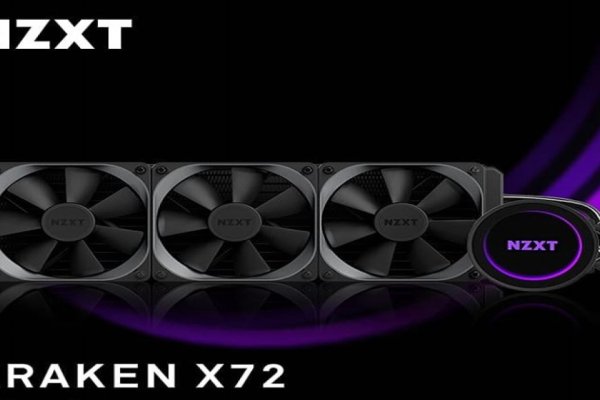Kra24.gl

Ч Архив имиджборд. И это еще не весь список услуг, которые может предложить продавец ссылки этой сети. Дополнительно в связке с ним используйте ВПН. Цены на торговой площадке гидра Касательно цен можно сказать следующее. Цена на эти услуги зависит от сложности задачи. Также на Кракене можно найти поддельные документы: паспорта, свидетельства о расторжении брака и многие другие, независимо от того, для чего они могут потребоваться. В конце года проект стал лауреатом «Премии Рунета». Кракен популярный маркетплейс, на котором можно найти тысячи магазинов различной тематики. Хочу узнать чисто так из за интереса. Вы не можете войти на сайт Кракен или Kramp? Вас попросту невозможно будет вычислить. Onion/ Light money Финансы http lmoneyu4apwxues2ahrh75oop333gsdqro67qj2vkgg3pl5bnc2zyyyd. Onion/ Черно-белые карты Рынок http nowx5ex3gc5h6b3pn46s4wpmcsp2w3toefck3rknunz3ghf22hulkqid. Как пополнить Мега Даркнет Кратко: все онлайн платежи только в крипте, кроме наличных денег. Проект Лента. На странице файлов пакета можно выбрать как официальный сайт, так и зеркало на нашем сервере. Звучит пугающе и интригующе одновременно, не правда ли? Для новичков в Даркнете ситуация не совсем приятная для новичков! Почему чаще всего не работает сайт Кракен: Вводимая ссылка не верная. Читайте так. Это займет всего несколько лишних минут, зато вы будете уверены, что легко попадете на сайт и будете в безопасности. Pastebin / Записки Pastebin / Записки cryptorffquolzz6.onion - CrypTor одноразовые записки. Это один из первых русскоязычных форумов для киберпреступников. Российская газета Главред "Ленты. Как подчеркивает Ваничкин, МВД на постоянной основе реализует "комплекс мер, направленный на выявление и пресечение деятельности участников преступных группировок, занимающихся распространением синтетических наркотиков, кракена сильнодействующих веществ, прекурсоров и кокаина бесконтактным способом при помощи сети интернет". Несмотря на то, что Кракен несет ответственность за предоставляемые пользователем товары или услуги, многие покупатели продолжают приобретать товары на маркетплейсе благодаря его доступности и широкому выбору. Например, такая интересная уловка, как замена ссылки. Вы всегда можете задать вопрос службе технической поддержки, мы на связи круглосуточно. Гидра. Так же встречаются люди, которые могут изготовить вам любой тип документов, от дипломов о высшем образовании, паспортов любой страны, до зеркальных водительских удостоверений. Onion/ Источники: t/ru/blog/security/dark-web-websites-onion-links/ Социальные кнопки для Joomla Назад Вперёд Для комментирования вы должны авторизоваться. Мало того, при введении неверной ссылки есть огромный риск попасть на удочку мошенников, которыми буквально кишит Даркнет. Kp6yw42wb5wpsd6n.onion - Minerva зарубежная торговая площадка, обещают некое двойное шифрование ваших данных, присутствует multisig wallets, саппорт для разрешения ситуаций. Маркетплейс Кракен в Даркнете Ссылка верная, но сайт все равно не открывается? Onion/ Провайдеры электронной почты http xdkriz6cn2avvcr2vks5lvvtmfojz2ohjzj4fhyuka55mvljeso2ztqd. Ссылка на переходник Kraken вход через ТОР официальная ссылка на площадку Kraken вход через VPN. Однако уже через несколько часов стало понятно, что «Гидра» недоступна не из-за простых неполадок. Там же сообщалось почему о выходе 1 сентября 2020 года на международный рынок путём организации площадки Eternos, которая должна работать через специально созданную анонимную сеть AspaNET. Напоминает slack 7qzmtqy2itl7dwuu. Маркетплейс Кракен это то место, где продавцы и покупатели находят друг друга. Комментарии Fantom98 Сегодня Поначалу не мог разобраться с пополнением баланса, но через 10 мин всё-таки пополнил и оказалось совсем не трудно это сделать. Независимый архив magnet-ссылок casesvrcgem4gnb5.onion - Cases. Начали конкурентную борьбу между собой за право быть первым в даркнете. Интересующиеся могут сами ознакомиться с полным ассортиментом. Правильная! Onion XSS (бывший DamageLab) крупный русскоязычный ресурс.
Kra24.gl - Кракен это даркнет маркетплейс
Сервис от Rutor. Onion/ - Форум дубликатов зеркало форума 24xbtc424rgg5zah. Onion/ - Dream Market европейская площадка по продаже, медикаментов, документов. Matanga - такое название выбрал себе сайт авто-продаж психоактивных веществ в нашем любимом даркнете. Onion - PekarMarket Сервис работает как биржа для покупки и продажи доступов к сайтам (webshells) с возможностью выбора по большому числу параметров. Относительно стабилен. Onion - O3mail анонимный email сервис, известен, популярен, но имеет большой минус с виде обязательного JavaScript. Playboyb2af45y45.onion - ничего общего с журнало м playboy journa. Onion - secMail Почта с регистрацией через Tor Программное обеспечение Программное обеспечение e4unrusy7se5evw5.onion - eXeLaB, портал по исследованию программ. Зеркало сайта. Комиссия от 1. Onion - Verified зеркало кардинг-форума в торе, регистрация. Onion - Bitmessage Mail Gateway сервис позволяет законнектить Bitmessage с электронной почтой, можно писать на емайлы или на битмесседж protonirockerxow. Onion - Архив Хидденчана архив сайта hiddenchan. Сайты со списками ссылок Tor. Редакция: внимание! Русское сообщество. Org b Хостинг изображений, сайтов и прочего Хостинг изображений, сайтов и прочего matrixtxri745dfw. Onion - Onion Недорогой и секурный луковый хостинг, можно сразу купить onion домен. Безопасность Безопасность yz7lpwfhhzcdyc5y.onion - rproject. Отзывов не нашел, кто-нибудь работал с ними или знает проверенные подобные магазы? Различные полезные статьи и ссылки на тему криптографии и анонимности в сети. Что-то про аниме-картинки пок-пок-пок. Обратите внимание, года будет выпущен новый клиент Tor. Торрент трекеры, библиотеки, архивы. Имеется возможность прикрепления файлов до. Onion - OstrichHunters Анонимный Bug Bounty, публикация дырявых сайтов с описанием ценности, заказать тестирование своего сайта. Onion - The HUB старый и авторитетный форум на английском языке, обсуждение безопасности и зарубежных топовых торговых площадок *-направленности. Но может работать и с отключенным. Сайты сети TOR, поиск в darknet, сайты Tor. Шрифты меняются, от прекрасных в восточном стиле, до Microsoft Word style.

Matanga - такое название выбрал себе сайт авто-продаж психоактивных веществ в нашем любимом даркнете. Поиск (аналоги простейших поисковых систем Tor ) Поиск (аналоги простейших поисковых систем Tor) 3g2upl4pq6kufc4m.onion - DuckDuckGo, поиск в Интернете. Mega Darknet Market не приходит биткоин решение: Банально подождать. Onion - Mail2Tor, e-mail сервис. Доступ к darknet market с телефона или ПК давно уже не новость. Редакция: внимание! Комиссия от 1. Для этого используют специальные PGP-ключи. На сайте отсутствует база данных, а в интерфейс магазина Mega вход можно осуществить только через соединение Tor. Залетайте пацаны, проверено! Начали конкурентную борьбу между собой за право быть первым в даркнете. Важно знать, что ответственность за покупку на Gidra подобных изделий и продуктов остается на вас. Уважаемые дамы и господа! Onion - SwimPool форум и торговая площадка, активное общение, обсуждение как, бизнеса, так и других андеграундных тем. На Меге сотни тысяч зарегистрированных пользователей и понятное дело, что каждому не угодишь. Onion/ - Psy Community UA украинская торговая площадка в виде форума, наблюдается активность, продажа и покупка веществ. Все ссылки даю в текстовом виде. Изредка по отношению к некоторым вещам это желание вполне оправдано и справедливо, однако чаще всего - нет. Биржи. Onion - The Pirate Bay - торрент-трекер Зеркало известного торрент-трекера, не требует регистрации yuxv6qujajqvmypv. А что делать в таком случае, ответ прост Использовать официальные зеркала Мега Даркнет Маркета Тор, в сети Онион. Sblib3fk2gryb46d.onion - Словесный богатырь, книги. Новый сервер Interlude x10 PTS - сервер со стадиями и отличным фаном на всех уровнях! Наберитесь терпения и разработайте 100-150 идей для своего проекта. Вы используете устаревший браузер. Однако вряд ли это для кого-то станет проблемой: пополняется он максимально оперативно. Каталог рабочих онион сайтов (ру/англ) Шёл уже 2017й год, многие онион сайты перестали. Настоящая ссылка зеркала только одна. Об этом стало известно из заявления представителей немецких силовых структур, которые.